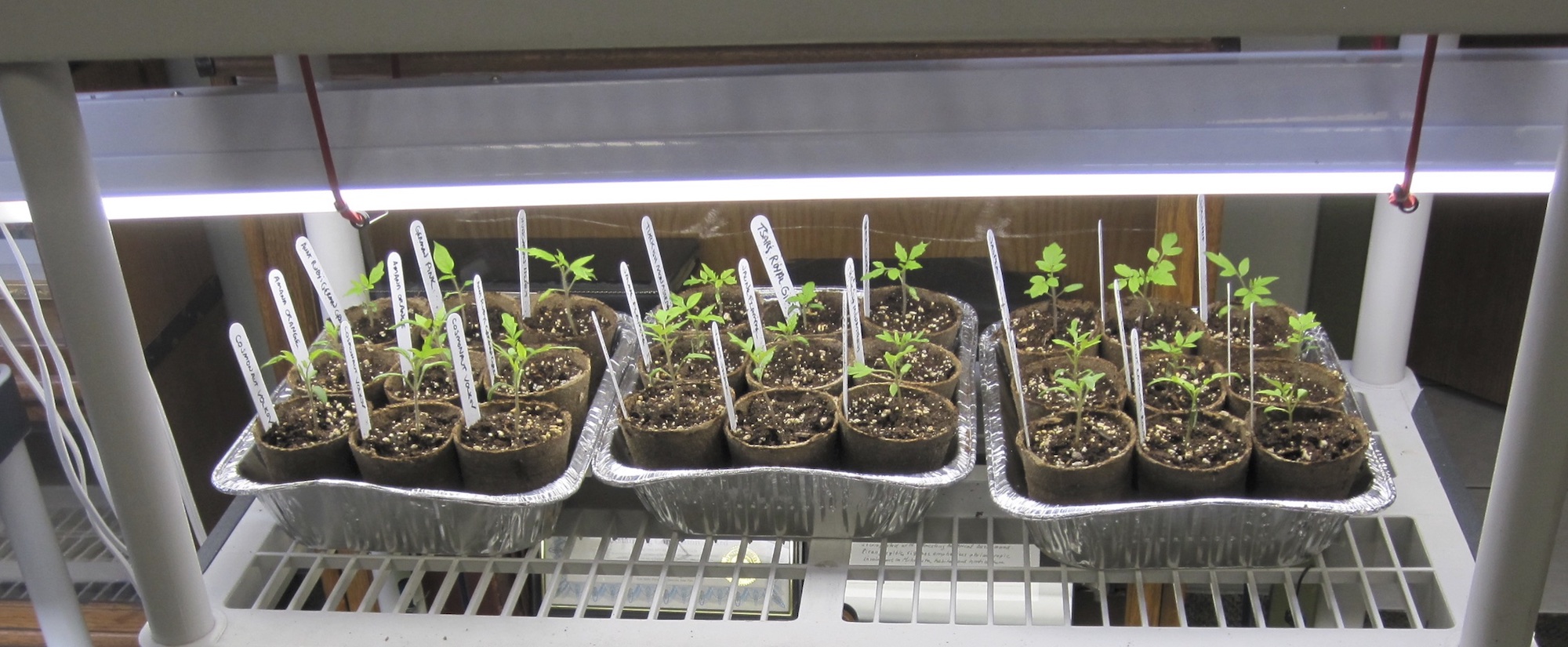Over the years, I’ve tried a number of techniques for seed starting, with mostly good results. My experiences with winter sowing have been mixed, so mostly I focus on starting seeds indoors in March and April for a cold-climate garden. (Mine is in USDA Zone 4.)
Here are my seed starting basics. First, if you are only growing a few tomatoes or peppers, indoor seed starting may not be worth the bother. Instead, pick up some plant starts at a local nursery. (Or, for more interesting offerings, try farmers’ markets in early spring when the farmers have lots of plants they don’t have room to grow.) However, if you are planning a more substantial garden or you just want to try indoor seed starting, seed starting is a way to increase the variety of offerings, save money, and control the kinds of plants you are growing. And, when it comes right down to it, you can get a pack of seeds that will produce bushels of food for less than the price of a latte.
A few tips:
- Study your seed catalogs. Make sure the seeds you buy are appropriate for our zone. If they have a long growing season, you’ll need to start them indoors or forget about growing them. The catalogs will also give you information about days to harvest, the kind of plant you are growing (bush beans or climbers? indeterminate tomatoes or determinate?), and whether the varieties are heirlooms, hybrids, or something else. I would add, read the seed packages and keep them for reference during the growing season.
- If you are new to seed starting, don’t spend a bundle on it. A simple florescent or LED bulb in a shop light will provide most of the light you need. You don’t need fancy pots or a special table just for seed starting. Basics you need are: sterile soil (not from the garden—buy potting mix), seeds, something to put them in with drainage holes, a light source, and a small fan to keep the air moving once the plants are growing.
- Make sure your seeds are cozy for germination. Tomatoes, peppers, and many herbs want soil between 75 and 85 degrees to germinate. If you have hot-water radiators, near the radiators is a great place to start plants. You may find that the lights create enough heat to start many plants in a moderately warm (65ish) room. (This is what I do.) If you are starting seeds in a cold basement, get a heat mat.
- Pay attention to your seedlings. My results with seed starting improved dramatically when I set the seeds up near my home office. It just became part of my day to check whether they needed water, the lights adjusted, or just a little pep talk.
- Water gently and sparingly. If possible, try to water from the bottom, by placing your seedlings in a pan.
For a more complete review of seed-starting procedures, check out this overview from North Dakota State University.

Leave a Reply